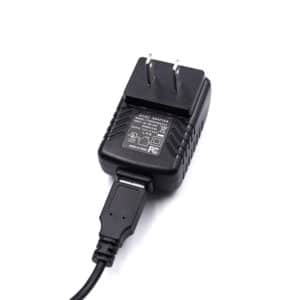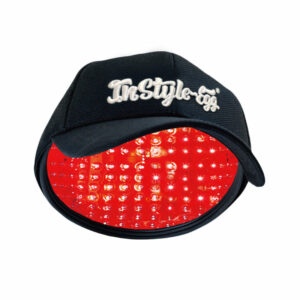Hair Loss in Woman
Hair Loss in Women
Long, short, bouncy, or sleek, it’s an expression way of women’s style and personality. But if you start to lose your hair, it can really freak you out. Hair loss in women might thin all over, or the center part might get wider and wider.
In the United States, there are one-third of susceptible hair loss in women (equals out to 30 million women) affected by Female-Pattern Hair Loss (FPHL). More than 50% of women are estimated to experience noticeable hair loss in their lifetime.
The severity of hair loss can be classified in many ways. Ludwig Classification Scale is shown below.
Long, short, bouncy, or sleek, it’s an expression way of women’s style and personality. But if you start to lose your hair, it can really freak you out. Hair loss in women might thin all over, or the center part might get wider and wider.
In the United States, there are one-third of susceptible women (equals out to 30 million women) affected by Female-Pattern Hair Loss (FPHL). More than 50% of women are estimated to experience noticeable hair loss in their lifetime.
The severity of hair loss can be classified in many ways. Ludwig Classification Scale is shown below.

Hair Loss Trigger in Women
Androgenetic Alopecia: as known as Female pattern baldness, it’s the most common type in hair loss. Hair thins over the top of the head and on the sides.
Telogen Effluvium (TE): It’s the second most common cause of hair loss, caused by an increased number of hair follicles reaching the resting phase. TE happens after childbirth or another stressful event.
Childbirth: During pregnancy, the flood of estrogen levels is rising higher to support baby, and the natural cycle of hair follicle is shedding. As a result, some women may lose fewer hair after the baby comes. It would take up to 2 years for your locks to return to normal.
Women who have had chemotherapy, been affected by other medications, often use tight hairstyles or harsh chemicals, and have menopausal, are likely to have hair loss too.
Symptoms
Signs and symptoms of FPHL may include:
- Circular or patchy bald spots
- Hair thins mainly on the top and crown of the scalp and starts with a widening through the center hair part, as known as Christmas tree pattern
Full-body hair loss conditions may cause by chemotherapy.

How Can I Treat My Hair Loss?
Low-Level Laser Therapy:
Studies have shown that laser treatment works on hair growth in both men and women. Stimulating hair follicles with Low-Level Laser Therapy (LLLT) of specific wavelength 650nm is safe, effective and painless for patients and has positive results.
Laser caps are one of the most popular laser devices and uses LLLT to regrow healthy hair, reverse thinning hair. InStyle-Egg® Laser Caps has three types: 80 didoes, 272 didoes and 280 diodes to emit laser light on the scalp tissue. All InStyle-Egg® Laser Caps are FDA-Cleared and clinically proven to be effective for hair loss, also non-invasive and painless hair treatments; laser caps are home-use devices and can be wore anytime, anywhere. It’s the way above the other treatments for hair loss in terms of performances and results. By regularly wearing laser cap, users can see visible changes of hair improvement.
Minoxidil:
Some medications can slow hair loss down. Minoxidil is an FDA-approved, over-the-counter treatment you apply to your scalp. It slows the rate of loss and helps some guys grow new hair. But once you stop using it, hair loss returns.
Hair Transplant Surgery:
Hair transplant is to move your hair already have (from the donor site) to fill an area with thin or no hair. Hair transplants work because not all of your hair is affected by DHT. By moving DHT-resistant hairs to a certain part of your head, the surgery may be able to give you a thicker, fuller head of hair. The technique assures no changes in the overall follicular distribution.
However, hair transplant doesn’t create new hair, it just produces a significant improvement in the appearance of your hair. All hair transplant techniques produce painful scars which becomes different size and shape on patients’ scalp. Possible risks include bleeding, bruising, swelling and infection. Speaking of cost, hair transplant is the more expensive one than other hair treatment options. Usually the costs vary from $6,000 for small cases, $10,000 for medium-sized cases and $15,000 for large cases.
How Can I Treat My Hair Loss?
Low-Level Laser Therapy:
Studies have shown that laser treatment works on hair growth in both men and women. Stimulating hair follicles with Low-Level Laser Therapy (LLLT) of specific wavelength 650nm is safe, effective and painless for patients and has positive results.
Laser caps are one of the most popular laser devices and uses LLLT to regrow healthy hair, reverse thinning hair. InStyle-Egg® Laser Caps has three types: 80 didoes, 272 didoes and 280 diodes to emit laser light on the scalp tissue. All InStyle-Egg® Laser Caps are FDA-Cleared and clinically proven to be effective for hair loss, also non-invasive and painless hair treatments; laser caps are home-use devices and can be wore anytime, anywhere. It’s the way above the other treatments for hair loss in terms of performances and results. By regularly wearing laser cap, users can see visible changes of hair improvement.
Minoxidil:
Some medications can slow hair loss down. Minoxidil is an FDA-approved, over-the-counter treatment you apply to your scalp. It slows the rate of loss and helps some guys grow new hair. But once you stop using it, hair loss returns.
Hair Transplant Surgery:
Hair transplant is to move your hair already have (from the donor site) to fill an area with thin or no hair. Hair transplants work because not all of your hair is affected by DHT. By moving DHT-resistant hairs to a certain part of your head, the surgery may be able to give you a thicker, fuller head of hair. The technique assures no changes in the overall follicular distribution.
However, hair transplant doesn’t create new hair, it just produces a significant improvement in the appearance of your hair. All hair transplant techniques produce painful scars which becomes different size and shape on patients’ scalp. Possible risks include bleeding, bruising, swelling and infection. Speaking of cost, hair transplant is the more expensive one than other hair treatment options. Usually the costs vary from $6,000 for small cases, $10,000 for medium-sized cases and $15,000 for large cases.





